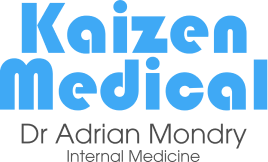High blood pressure is a common health concern in Singapore, yet many people remain unaware they have it until it starts affecting their daily life. The condition often develops gradually and produces no obvious symptoms in the early stages.
Regular monitoring and understanding subtle warning signs are key to identifying high blood pressure before it leads to serious health problems.
What is High Blood Pressure?
Blood pressure refers to the force of blood pressing against the walls of your arteries as your heart pumps. When this pressure stays too high over time, it can strain your heart and blood vessels.
A normal blood pressure reading is generally below 120/80 mmHg. High blood pressure is often diagnosed when readings consistently reach 140/90 mmHg or higher in a clinical setting, or 135/85 mmHg or higher when measured at home.
Understanding High Blood Pressure Warning Signs
Most people with high blood pressure do not experience obvious symptoms in the early stages. However, certain warning signs may suggest that your blood pressure is elevated and should be assessed:
- Frequent headaches, particularly at the back of the head or upon waking
- Feeling unusually tired after normal activities or ongoing low energy
- Occasional blurry vision, difficulty focusing, or seeing spots that clear quickly
- Lightheadedness or mild dizziness, especially when standing up
Who is at Higher Risk of High Blood Pressure?
Certain factors increase your chances of developing high blood pressure. These include:
Family history of cardiovascular disease: Having parents or siblings with high blood pressure, heart disease, or stroke increases your risk significantly
Gradual weight gain over several years: Particularly weight carried around your midsection, as abdominal fat affects blood vessel function
Chronic stress from work or personal situations: Ongoing pressure that affects your sleep, eating habits, or causes physical tension
Sleep quality changes: Snoring, frequent waking, or feeling unrefreshed after sleep, which can indicate sleep apnoea linked to blood pressure problems
How to Monitor Your Blood Pressure at Home
Home blood pressure monitoring is a simple and reliable way to check for early signs of hypertension. To get accurate readings:
- Use a validated upper-arm digital monitor
- Sit quietly for five minutes before measuring
- Rest your arm at heart level during the reading
- Take readings at the same time each day, such as morning and evening
- Track your results over several weeks to identify consistent patterns
If your home readings are consistently above 135/85 mmHg, it is advisable to speak with a hypertension specialist.
Prevention and Management of High Blood Pressure
Simple, long-term changes to your daily routine can help lower your risk of developing high blood pressure or help manage it:
- Reduce salt intake by limiting processed foods and cooking with fresh ingredients
- Aim for at least 150 minutes of moderate exercise per week, such as brisk walking or cycling
- Maintain a healthy weight through balanced meals and portion control
- Get enough quality sleep by establishing a consistent bedtime routine
- Manage stress through relaxation techniques, physical activity, or speaking with a healthcare professional if needed
When to Seek Medical Advice
It is advisable to consult a specialist for high blood pressure monitoring in Singapore if:
- Your home blood pressure readings are consistently above 135/85 mmHg
- You have a family history of high blood pressure and other risk factors
- You experience symptoms like headaches, fatigue, or dizziness that affect your daily life
- You are over the age of 40, as routine screening is recommended for all adults
Conclusion
High blood pressure often develops gradually and without clear warning signs. Regular monitoring, awareness of risk factors, and simple lifestyle adjustments can help detect and manage high blood pressure early.
If you are concerned about your blood pressure or have risk factors, schedule a consultation with our internal medicine and hypertension specialist. Early detection allows for timely intervention and helps reduce the risk of long-term health problems.


